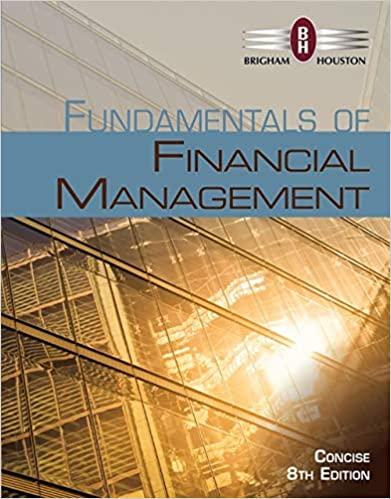RATES OF RETURN AND EQUILIBRIUM Stock Cs beta coefficient is bC 0 4, while Stock Ds is
Question:
RATES OF RETURN AND EQUILIBRIUM Stock C’s beta coefficient is bC 0 4, while Stock D’s is bD 0 5. (Stock D’s beta is negative, indicating that its return rises when returns on most other stocks fall. There are very few negative beta stocks, although collection agency stocks are sometimes cited as an example.)
1A price change of this magnitude is by no means rare. The prices of many stocks double or halve during a year. For example, in 2012, Lumber Liquidators’ stock price increased by 199.2%. On the other hand, Houston American Energy’s stock price declined by 98.2%.
2It should be obvious by now that actual realized rates of return are not necessarily equal to expected and required returns. Thus, an investor might have expected to receive a return of 15% if he or she had purchased Lumber Liquidators’ or Houston American Energy’s stock in 2012; but after the fact, the realized return on Lumber Liquidators was far above 15%, whereas the return on Houston American Energy was far below 15%.
a. If the risk-free rate is 7% and the required rate of return on an average stock is 11%, what are the required rates of return on Stocks C and D?
b. For Stock C, suppose the current price, P0, is $25 00; the next expected dividend, D1 is $1 50; and the stock’s expected constant growth rate is 4%. Is the stock in equilibrium?
Explain and describe what will happen if the stock is not in equilibrium.AppendixLO1
Step by Step Answer:

Fundamentals Of Financial Management Concise Edition
ISBN: 9781285065137
8th Edition
Authors: Eugene F. Brigham, Joel F. Houston





